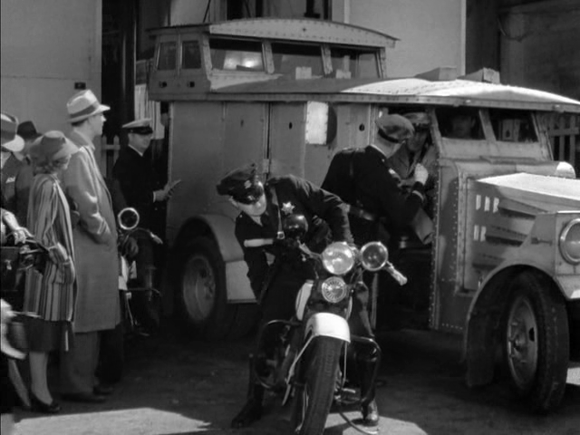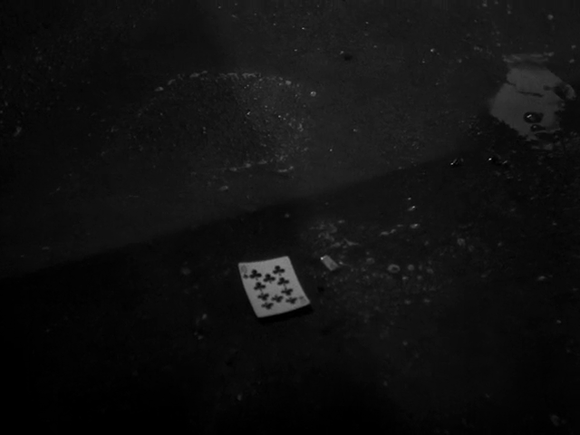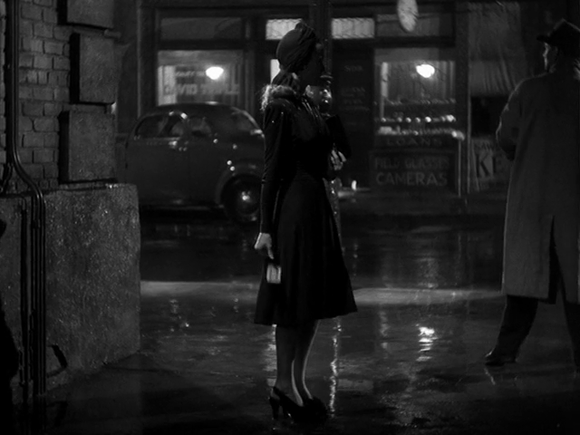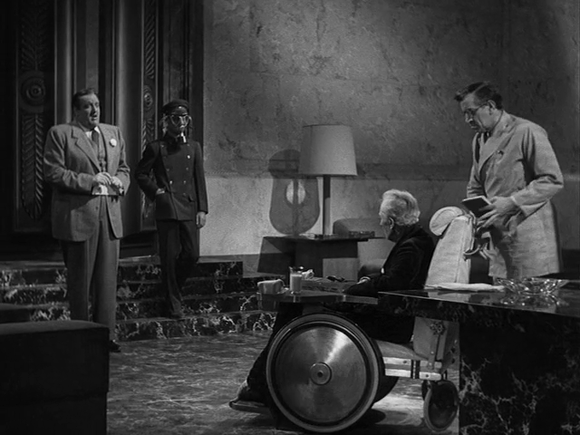Watch first, then read the ↑analysis by Bruce Schneier :)
what is inside?
zeph’s pop culture quiz #26

What is inside the armoured car so strongly guarded by the coppers? The rule is that every Monday I post one pop culture quiz question, but as the last times, and today, they were solved just too fast I decided to post a second one today. Obviously my riddles are too easy—now dig your teeth into this one!
Just leave a comment with your educated guess—you can ask for additional hints, too. [Leaving a comment is easy; just click the ‘Leave a comment’ at the end of the post and fill in the form. If it’s the first time you post a comment, it will be held for moderation. But I am constantly checking, and once I’ve approved a comment, your next ones won’t be held, but published immediately by the system.]
UPDATE and solution (27 April 2012):
Now that really was a tough one and it needed some hints from my side, but then Alexander Rabitsch ↵got the movie, and the very next moment ryoku ↵posted the solution :D Inside the armoured car is the crown of Bilqis, the Queen of Sheba, which is about to be driven from San Francisco harbour to the Fremont Museum. The scene is from the last of the Mr.-Moto movies starring ↑Peter Lorre, ‘↑Mr. Moto Takes a Vacation‘ (Foster 1939). Here is Peter Lorre as Mr. Moto with the crown:

what is closed?
zeph’s pop culture quiz #25

What has been closed? After the quick solutions the last two times, hopefully this one’s harder … the screencap is from an extremely well known movie, though.
Just leave a comment with your educated guess—you can ask for additional hints, too. [Leaving a comment is easy; just click the ‘Leave a comment’ at the end of the post and fill in the form. If it’s the first time you post a comment, it will be held for moderation. But I am constantly checking, and once I’ve approved a comment, your next ones won’t be held, but published immediately by the system.]
colonial crimes records
again a glimpse into the heart of darkness

Thousands of documents detailing some of the most shameful acts and crimes committed during the final years of the British empire were systematically destroyed to prevent them falling into the hands of post-independence governments, an official review has concluded.
Those papers that survived the purge were flown discreetly to Britain where they were hidden for 50 years in a secret Foreign Office archive, beyond the reach of historians and members of the public, and in breach of legal obligations for them to be transferred into the public domain.
The archive came to light last year when a group of Kenyans detained and allegedly tortured during the Mau Mau rebellion won the right to sue the British government. The Foreign Office promised to release the 8,800 files from 37 former colonies held at the highly-secure government communications centre at Hanslope Park in Buckinghamshire.
Read the complete article ↑Britain destroyed records of colonial crimes at The Guardian …
evil overlord workstation

Way back in 2008 I reported on attempts to cyberpunkify ergonomic solutions for computer workplaces: see ↵laid back and ↵laid back flagship. Now MWE Lab has driven it to new heights in every respect … the ↑Emperor 200 comes with a lavish price-tag of $45,000. Roberto Baldwin at Wired’s Gadget Lab ↑has commented perfectly:
Upon sitting in the Emperor 200, users tap on the touchscreen to lower the monitors and nestle themselves into a computing bubble worthy of a Bond villain. Because each workstation is built to order, MWE labs can customize each installation to handle different computing platforms, even adding peripherals like iPhone docks. But this level of customization doesn’t come quickly. After placing your order, it’ll take six months to build your Emperor 200—just enough time to get the volcano hollowed out for your secret lair.
Besides as movie props there is only one application for those coming to my mind, which makes sense: as glitzy gadgets for electronic sports. Imagine two of those, a white one and a black one, or even better: a red one and a blue one on stage. In them ↑cypher and ↑Rapha fighting for the ↑Quake Live world championships.
But then again—how could you play ↑russian style in one of those?
all your life

‘Things Don’t Seem Wonderful If You’ve Seen Them All Your Life’ by the ‘Dean of American Cartoonists’ ↑John T. McCutcheon (1912).
gaming and murder
Over at ↑Rock, Paper, Shotgun John Walker insightfully debunks the media’s way of dealing with computer games in connection with Anders Breivik:
It is inevitable that during the trial of Norwegian mass murderer, Anders Breivik, that the matter of videogaming will come up. Soon after the horrendous events I dug into what Breivik had actually said about gaming in his ghastly manifesto, and it was pretty much nothing of relevance. But with the press still not having found the next nasty to leap on, gaming is the scapegoat. It seems reasonable to point out how inaccurate this remains, and how attempting to shift the blame onto things uninvolved only makes it more likely that whatever led to Breivik’s state of mind will not be discovered. But now that Breivik has testified about how important playing WoW was to him, and his peculiar understanding of Modern Warfare 2, it’s all happening again.
It’s absolutely worthwhile to read all of ↑Breivik Testifies About Gaming, Press Ignores The Facts, especially as social anthropologist ↑Thomas Hylland Eriksen, whom I do respect highly, also has made some unfortunate comments concerning Breivik and games—see above video.
science fiction debt

Jo Walton’s ↑The Best Science Fiction Ideas in any Non-Fiction Ever: David Graeber’s Debt: The First Five Thousand Years has some nice ideas about why so many science fiction readers and writers are fascinated by ↵anthropologist David Graeber’s book ‘Debt’ (2011):
One of the problems with writing science fiction and fantasy is creating truly different societies. We tend to change things but keep other things at societal defaults. It’s really easy to see this in older SF, where we have moved on from those societal defaults and can thus laugh at seeing people in the future behaving like people in the fifties. But it’s very difficult to create genuinely innovative societies, and in genuinely different directions. As a British reader coming to SF there were a lot of things I thought were people’s amazing imagination that turned out to be normal American things and cultural defaults. And no matter how much research you do, it’s always easier in the anglosphere to find books and primary sources in English and about our own history and the history of people who have interacted with us. And both history and anthropology tend to be focused on one period, one place, so it’s possible to research a specific society you know you want to know about, but hard to find things that are about the range of options different societies have chosen.
What Debt does is to focus on a question of morality, first by framing the question, and then by examining how a really large number of human societies over a huge geographical and historical range have dealt with this issue, and how they have interacted with other people who have very different ideas about it. It’s a huge issue of the kind that shapes societies and cultures, so in reading it you encounter a whole lot of contrasting cultures. Graeber has some very interesting ideas about it, and lots of fascinating details, and lots of thought provoking connections.
last riddler challenges

Just yesterday I had a longer conversation [not online, but face to face, beer by beer] with a doctoral student of mine ↑who does deeply immersed fieldwork around and within the ‘StarCraft II’ (SC2 | Blizzard Entertainment 2010) pro-gamer scene. Matchingly enough the day before yesterday I reread ↓Bearman 2008 and ↵watched ‘King of Kong’ (Gordon 2007) and ‘Chasing Ghosts’ (Ruchti 2007), wondering at the lengths high-end arcade-gamers go. Well, he told me about the lengths the SC2-specialists go, especially in terms of analysis of the game, its patches, actual matches, etc. Up to writing book-lengths compendiums. After enough grinning head-shaking—to cover up our fascination and admiration—we went on to the topic of games we have played recently. He did ‘Rage’ (id Software 2011), which still sits unopened on my shelf, and I did, well ‘Batman: Arkham City’ (Rocksteady 2011). When I told him that I am not only 100% through with the main story and all side missions, but although got 332 of the 440 Riddler challenges, it was him who shook his head on me.
Yes, I collected all the Riddler and Catwoman trophies, destroyed every single one of the Joker teeth and balloons, the Demon Seals, Penguin statues, Tyger surveillance cameras, fried every single of the Harley Quinn mannequins, hacked every Tyger console, and scanned every riddle—in Park Row, the Amusement Mile, Industrial Quarters, the Subway, the Bowery, the Steelmill, the Museum, and in Wonder City.
The final eight I am still missing are all from the physical challenges category, see above.
I did quite well especially with the navigational challenges. E.g. required were 250 metres gliding with grapnel boost allowed—I did 427.8 metres as my best. Or 150 metres of gliding without grapnel boost were required—my best was 364.8 metres. I am still searching an online record table for those.
The eight missing ones are all combat-related. Hardly surprising, as I never was very prone to beat’m’ups. Nevertheless, a 30x combo was required, my best till now was 37x. But I am completely at sea with things like ‘achieve a 5x variation’ … All right, I am absolutely willing to do that, but what in Serious Sam Hill is it?!?
There seems to be no way around consulting abaddononion2’s 33,000-word ↑Batman: Arkham City: Combat Mechanics Guide.
who dropped it?
zeph’s pop culture quiz #24

It still is noir-time around here: Who dropped the ten of clubs on the dark, wet street, and why? On the one hand playing cards have something to do with the character in question, on the other hand the dropping is needed for the advancement of the plot. Plus, in the time the dropper was a star, a true icon.
Just leave a comment with your educated guess—you can ask for additional hints, too. [Leaving a comment is easy; just click the ‘Leave a comment’ at the end of the post and fill in the form. If it’s the first time you post a comment, it will be held for moderation. But I am constantly checking, and once I’ve approved a comment, your next ones won’t be held, but published immediately by the system.]
UPDATE and solution (19 April 2012):

Ryoku ↵did it again—congratulations! As you can see above ;) it was 1940s movie icon and pin-up goddess ↑Veronica Lake who dropped the ten of clubs. In ‘↑This Gun for Hire‘ (Tuttle 1942)—based on ↑Graham Greene‘s novel ‘A Gun for Sale’ (1936)—she is kidnapped by the cold-as-ice contract killer Raven (↑Alan Ladd—to the far right in the screencap). Lake’s character Ellen Graham is a stage magician performing in nightclubs. Hence she not only has a stack of personalized playing cards with her, but also the skills to drop and place them unnoticed. That way she plants a trace for enabling the police to follow her and Raven.
When the movie was made, Veronica Lake already was a star and Paramount’s biggest box office drawer (you can read the story of her life following the Wikipedia-link above … it will send shivers down your spine). Alan Ladd in turn had appeared only in minor roles and so only was billed fourth in ‘This Gun for Hire.’ But his depiction of the ‘hitman developing a conscience’ immediately made him a star. It was Ladd’s performance which established this kind of meanwhile transmedially iconic character. The same type made Alain Delon a star 25 years later, performing in ‘Le Samouraï’ (aka ‘The Samurai’ | Melville 1967).
‘This Gun for Hire’ of course is pure film noir and has no science-fiction elements whatsoever. But towards the end there are scenes which æsthetically link film noir to cyberpunk:


